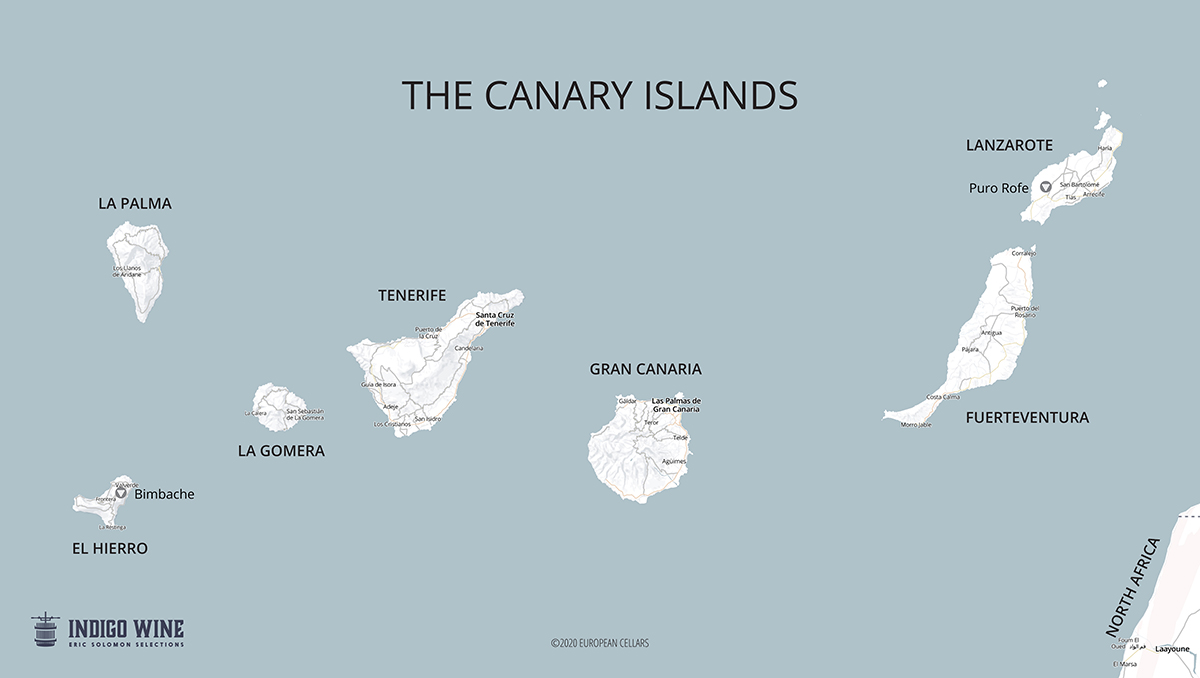


One week after the New York Times published a stunning photo essay by Mónica R. Goya fittingly titled, Roaming Through Lanzarote’s Otherworldly Vineyards, Luis Gutiérrez published his reviews in the Wine Advocate (subscription required) of the best growers in the Canary Islands.
Apparently, it is Canary Island Time.™
Apart from the countless other things, one thing remarkable about these islands is how rapidly wine culture is changing here. For quite some time, these islands ran almost entirely on the tourist trade, mostly from Spain and Northern Europe, so there was always demand for cheap, and more often than not, indifferently made wines. The problem with this system is that it makes grape growing an arduous and unrewarding activity for younger generations. Luckily, that has begun to change.

Vines in Lanzarote with hoyos – hand-dug craters surrounded by short walls, and a chaboco in the center – a repurposed volcanic fissure where Moscatel thrives. This is one of Puro Rofe’s vineyards. Photo courtesy of ©2017 Estanis Nuñez
We first caught wind (that’s an irresistible and possibly lame reference to the alicios, the nearly constant trade winds that refresh these islands in summer) of Rayco Fernández back in 2017 when he was starting up a novel project in Lanzarote that would go on to become Puro Rofe. Rayco is a native of the Canaries and runs a wine distributor out of Gran Canaria. Still, his true calling is being the leading proponent of each of these Islands’ indelible and individual potential – especially those that have yet to be truly discovered and explored.
When we met with Rayco for dinner in Madrid in the summer of 2019, we intended to talk about the upcoming releases from Puro Rofe, but as an appetizer, he was far more interested in his budding projects in Gran Canaria, La Gomera, and El Hierro. We did taste the entire mineral-laced range of wines from Puro Rofe but were also quite excited about his plans for the future.
This long wind-up is basically to say that we have just received our first shipment of Bimbache, Rayco’s newest project situated on El Hierro. This island is the smallest, most remote, and least visited of all the Canary Islands. It also happens to be entirely powered by renewable energy. It is the repository of the greatest diversity of grape varieties in the Canaries – all crammed into its 167 surviving hectares of vines. You can read all about this project here. As with Puro Rofe, initial quantities are small, but there are plans to grow gradually in the coming years.

The Piedra Juan vineyard in Frontera, El Hierro. A vineyard with a view, or a view with a vineyard.
*The title of this post refers to the novel, The Island of the Day Before by Umberto Eco – a meandering meditation in part on the establishment of the international date line and prime meridian. The ancient cartographer Ptolemy set the western edge of the known world at the furthest reach of the Fortunate Islands – long associated with the Canaries. During the 16th-18th centuries, the prime meridian was variously placed by cartographers as far east as Fuerteventura to Cape Verde in the west before being firmly established at the Royal Observatory in Greenwich, England.